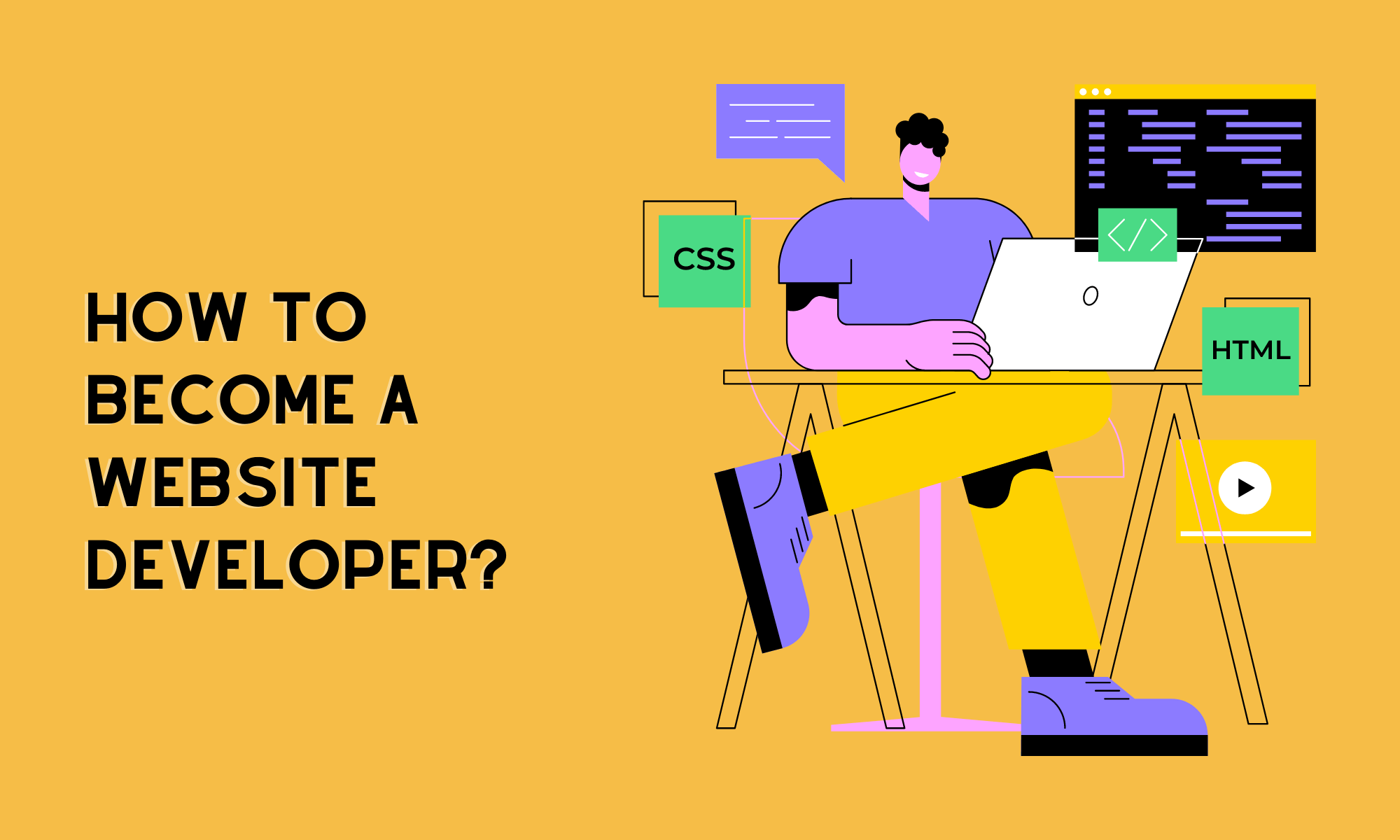Becoming a website developer involves gaining a combination of technical skills, practical experience, and creativity. Here is a step-by-step guide on how to become a website developer:
Acquire Necessary Skills:
- Learn HTML: Hypertext Markup Language (HTML) is the foundation of web development. It defines the structure and content of web pages.
- Study CSS: Cascading Style Sheets (CSS) is used to control the presentation and layout of web pages, including fonts, colors, and spacing.
- Master JavaScript: JavaScript is a scripting language that adds interactivity and dynamic elements to websites. It is essential for creating interactive user experiences.
- Familiarize Yourself with Front-End Frameworks: Front-end frameworks like Bootstrap or React can help streamline the development process and improve the user interface.
- Understand Back-End Technologies: To work on dynamic websites and handle server-side tasks, learn about back-end technologies such as Node.js, Python, PHP, or Ruby on Rails.
Enroll in Web Development Courses:
- Look for online courses, tutorials, or bootcamps that offer comprehensive web development training. Many platforms like Udemy, Coursera, and freeCodeCamp offer web development courses.
- Consider pursuing a degree in computer science or a related field for a more formal and in-depth education.
Build a Portfolio:
- Create your own website or web applications to showcase your skills. Use this portfolio to demonstrate your abilities to potential employers or clients.
- Include a variety of projects, such as static websites, interactive web applications, and responsive designs.
Get Hands-On Experience:
- Participate in open-source projects on GitHub to collaborate with other developers and gain practical experience.
- Volunteer for web development projects for non-profit organizations or local businesses to build your portfolio and network.
Stay Updated with Industry Trends:
- Web development technologies evolve rapidly. Stay informed about the latest trends, tools, and best practices by reading blogs, following web development communities, and attending conferences or webinars.
Learn about Content Management Systems (CMS):
- Familiarize yourself with popular CMS platforms like WordPress, Joomla, or Drupal, as many websites are built on these platforms.
Practice Responsive Design:
- Ensure that your websites are responsive and mobile-friendly, as a significant portion of web traffic comes from mobile devices.
Collaborate and Seek Feedback:
- Work with other developers or join online communities to collaborate on projects and receive feedback on your work. This will help you improve your skills and learn from others.
Specialize if Desired:
- Consider specializing in a specific area of web development, such as front-end development, back-end development, or full-stack development, based on your interests and strengths.
Start Applying for Jobs or Freelance Projects:
- Once you feel confident in your skills and have a strong portfolio, start applying for web developer positions or freelance opportunities. Tailor your applications to showcase your relevant experience and projects.
Remember that web development is an ongoing learning process. Stay curious, practice regularly, and continue to improve your skills to stay competitive in the field.
